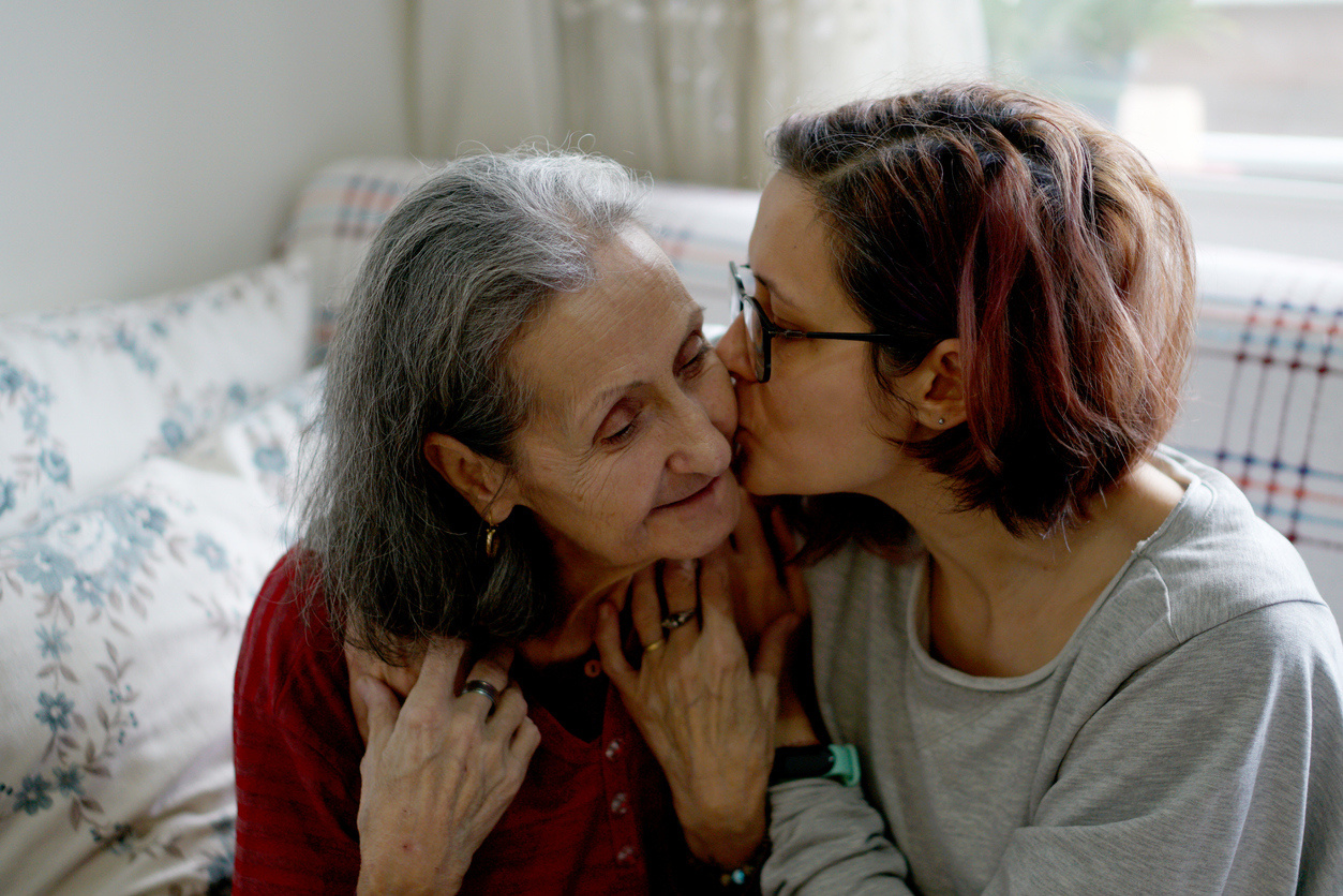Residential Aged Care
At Catholic Healthcare, what matters to you matters to us. As a resident, you’ll feel truly seen, heard, and known — supported by a team that’s not only experienced in aged care but deeply committed to helping you live with dignity, connection, and purpose.
We focus on the small things that make a big difference — like knowing how you take your tea, offering meals freshly prepared in our kitchens every day, and ensuring your laundry is lovingly cared for on site.
Our chefs even partner with the Maggie Beer Foundation to elevate your dining experience, and you may be invited to taste test new seasonal menus. In many of our homes, you will also appreciate the convenience of having allied health professionals, hairdressers, and even cafes right where you live.
2,757 residential aged care residents
41 residential aged care homes
![]() 92% residents feel heard
92% residents feel heard
Our Services
Aged Care Fees & Subsidies
Understanding the cost of Residential Aged Care can be confusing, which is why we’ve created some easy-to-follow resources to guide you.
Dove Plus services
Our Dove Plus service goes above and beyond our already high level of accommodation and quality care. You can enjoy gentle exercise, high teas, entertainment, weekly happy hour, and greater menu choices. The service offering at each Home varies and is priced accordingly.
True to our Mission, Catholic Healthcare is proud to provide care and accommodation to those who may need financial support. Speak to a member of our Customer Relations Team on 1800 225 474 to find out how we can offer assistance.
Wellbeing and leisure
At Catholic Healthcare, we believe wellbeing is about more than physical care — it’s about connection, purpose, and joy.
Our lifestyle programs are designed to support your emotional wellbeing and help you stay engaged in a vibrant, inclusive community. Whether you enjoy socialising in a group or prefer quieter individual activities, we’ll help you spend your time in ways that are meaningful to you.
Our Foundations Program
All our homes offer the Foundations Program — a collection of enriching experiences that enhance comfort, creativity, and connection in daily life.
- Hummingbirds
- Engage volunteer program
- Playgroup NSW intergenerational visits
- Therapeutic comfort care
- Nourish dining and nutrition program
- Expressive arts
- Thrive with dementia – offered in Memory Support Units as the specialised equivalent of Foundations
Together, these programs support your mind, body and spirit — helping you feel truly at home.
Simple steps to get started
Step 1: Register with My Aged Care
Firstly, give us a call on 1800 225 474 if you haven’t already registered with myagedcare.gov.au, we will assist you. We’ll also walk you through your options and provide helpful forms and documents. Once registered, My Aged Care will then visit you to assess your eligibility and needs. Read our tips to prepare for this assessment.
Step 2: Come in for a visit
Our friendly team will arrange a tour of our Homes so you can experience what we can offer.
Step 3: Choose your new home
If you want to move forward and have chatted with your legal and financial advisors, please send in your application documents.
Step 4: Settle into your new home
We can’t wait to welcome you and will arrange a suitable moving in date. We look forward to helping you settle in and caring for you in your new home.
Watch our helpful video for more information about the steps you should take when deciding to move into a residential home.
What can you expect when you move into a Catholic Healthcare residential home?
We understand that adjusting to living in a residential aged care home can signify a major change in lifestyle and so it is important to have time to adjust to this change. This will likely impact you’re your family and loved ones. Catholic Healthcare understands this and will be here every step of the way.
Frequently asked questions
-
1. What is residential aged care?
Sometimes, even with help, it’s no longer possible to remain living at home. If you and your family are looking for peace of mind, residential aged care could be the ideal solution with round the clock nursing and support within a managed care home.
Alternatively, you may wish to use residential aged care for respite care, a short term form of care (usually when existing family carers need a break or to experience what a particular care home is like on a trial basis before deciding to permanently move in).
-
2. Who is eligible for residential aged care?
Most Senior Australians who choose to move into a residential aged care Home will do so using a government subsidy to assist with the cost of aged care. In order to access a subsidy, assessment of your care needs must first be done by My Aged Care.
You may be eligible for an assessment if you have:
- Registered with My Aged Care (visit myagedcare.gov.au)
- noticed a change in what you can do or remember
- been diagnosed with a medical condition or reduced mobility
- experienced a change in family care arrangements, or
- experienced a recent fall or hospital admission.
-
3. How much does residential aged care cost?
The cost of aged care is different for every individual and is determined by the Australian Government based on your financial situation -please see their handy fee estimator calculator at https://www.myagedcare.gov.au/how-much-will-i-pay.
You'll find there are three different types of fees and charges that may apply when moving into any aged care home as follows:- Basic Daily Care Fee - This is the standard charge for every resident in aged care set by the Australian Government and is calculated at 85% of your single Centrelink pension. This fee covers costs for meals, laundry and utilities.
- Accommodation Payment - All residents who the Commonwealth Government determines to be non-supported will pay an Accommodation Payment. There are four options for paying the Accommodation Payment; Refundable Accommodation Deposit, Daily Accommodation Payment, a Combination Payment and a Drawdown Payment.
- Means Tested Fee - This is a contribution towards the cost of your care. This fee is determined by Centrelink or DVA and may not be applicable to you.
How much you pay depends on your financial situation, which is assessed by Centrelink and is based on your income and assets.
-
4. What is the difference between a RAD and a DAP?
- Refundable Accommodation Deposit (RAD) - A lump-sum payment option if you are required to pay for your accommodation in full. This is refunded when the resident leaves the aged care home.
- Daily Accommodation Payment (DAP) - A recurring rental type payment option to be paid in increments if you are required to pay for your accommodation in full.
- Combination Payment - A payment option consisting of a part RAD payment supplemented with a Daily Accommodation Payment.
-
5. What is included in the cost?
There are a wide range of services covered by the above-mentioned charges, including (but not limited to) care, accommodation, room furnishing, electricity, water, cleaning, general laundry, meals and refreshments. To discuss a personalised care plan for you, please speak with our friendly team.
News
Get Personalised Advice
Fill out the form and our expert will get in touch
If you are enquiring about employment opportunities, please see vacancy and apply through here.
Acknowledgement of Country
We acknowledge the Traditional Owners and Custodians of the lands on which we live, work, and dream. We pay our respects to the Wallumedegal People. To their Indigenous Elders past and present, for they hold the traditions, culture, and hopes of their people as we journey towards reconciliation. We acknowledge that they have occupied and cared for these lands and waterways over countless generations. It always was, and always will be, Aboriginal land.








 Evelyn, Resident at Holy Spirit Casula
Evelyn, Resident at Holy Spirit Casula George, Resident at Catholic Healthcare
George, Resident at Catholic Healthcare Michael, Son of a Resident at McQuoin Park (Wahroonga)
Michael, Son of a Resident at McQuoin Park (Wahroonga)




